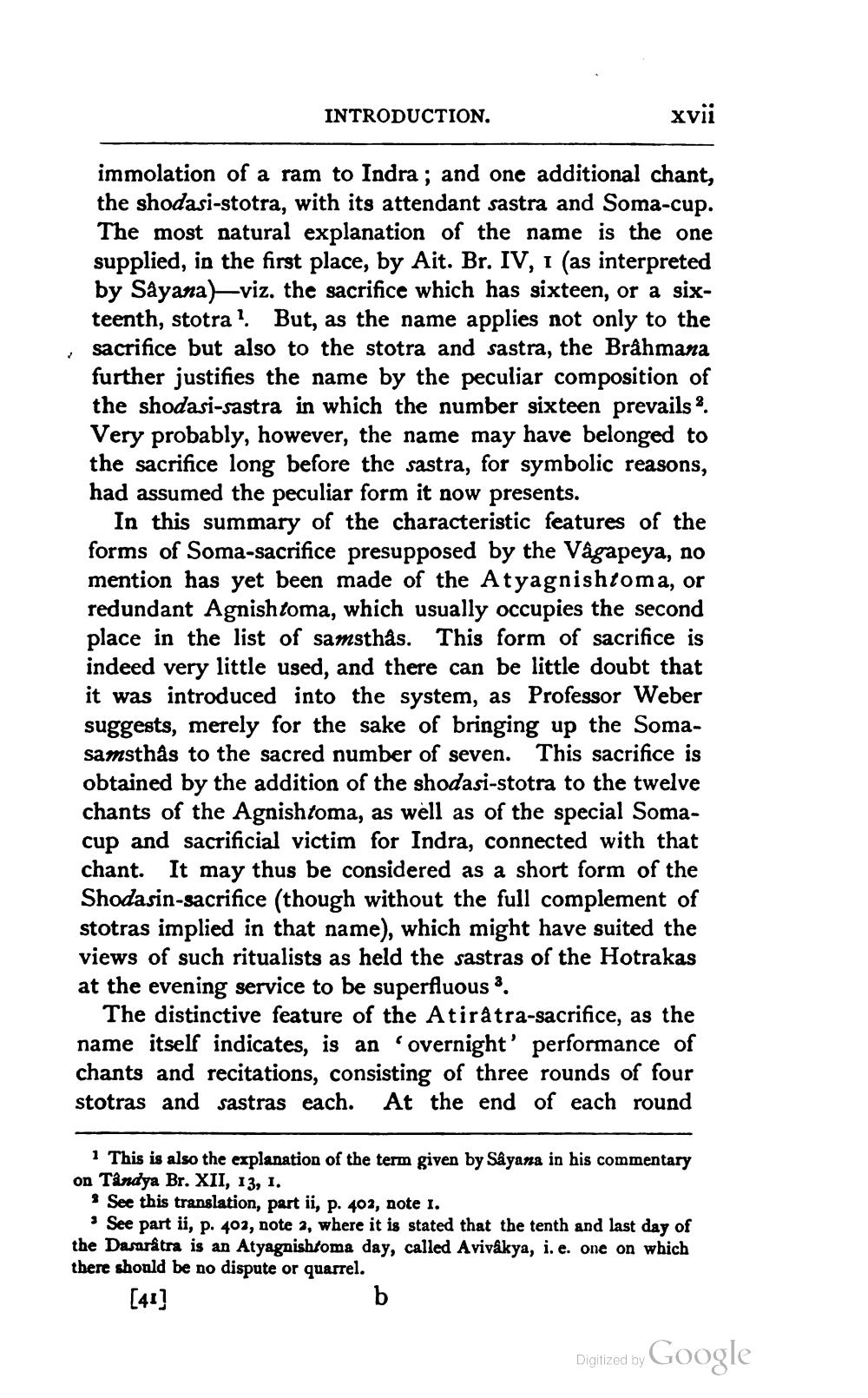________________
INTRODUCTION.
xvii
immolation of a ram to Indra ; and one additional chant, the shodasi-stotra, with its attendant sastra and Soma-cup. The most natural explanation of the name is the one supplied, in the first place, by Ait. Br. IV, 1 (as interpreted by Sayana) viz. the sacrifice which has sixteen, or a six
teenth, stotra? But, as the name applies not only to the į sacrifice but also to the stotra and sastra, the Bråhmana
further justifies the name by the peculiar composition of the shodasi-sastra in which the number sixteen prevails 2. Very probably, however, the name may have belonged to the sacrifice long before the sastra, for symbolic reasons, had assumed the peculiar form it now presents.
In this summary of the characteristic features of the forms of Soma-sacrifice presupposed by the Vågapeya, no mention has yet been made of the Atyagnishtoma, or redundant Agnish toma, which usually occupies the second place in the list of samsthås. This form of sacrifice is indeed very little used, and there can be little doubt that it was introduced into the system, as Professor Weber suggests, merely for the sake of bringing up the Somasamsthås to the sacred number of seven. This sacrifice is obtained by the addition of the shodasi-stotra to the twelve chants of the Agnishtoma, as well as of the special Somacup and sacrificial victim for Indra, connected with that chant. It may thus be considered as a short form of the Shodasin-sacrifice (though without the full complement of stotras implied in that name), which might have suited the views of such ritualists as held the sastras of the Hotrakas at the evening service to be superfluous.
The distinctive feature of the Atirâtra-sacrifice, as the name itself indicates, is an overnight' performance of chants and recitations, consisting of three rounds of four stotras and sastras each. At the end of each round
1 This is also the explanation of the term given by Sayana in his commentary on Tandya Br. XII, 13, 1.
See this translation, part ii, p. 402, note 1.
See part ii, p. 402, note 2, where it is stated that the tenth and last day of the Dasarätra is an Atyagnishtoma day, called Avivákya, i.e. one on which there should be no dispute or quarrel.
[41]
b
Digitized by Google




